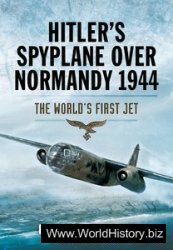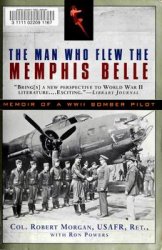|
|
 
 Jagdpanther vs SU-100: Eastern Front 1945 Jagdpanther vs SU-100: Eastern Front 1945 
 Jagdpanther vs SU-100: Eastern Front 1945 Author: David R. Higgins, Richard Chasemore Osprey Publishing Osprey Duel 58 ISBN: 978 1782002956 2014 Language: English Pages: 82 Format: PDF Size: 3,7 MB As World War II in Europe reached its end, armour development and doctrine had experienced several years of massively accelerated change, especially within the crucible of the Eastern Front. The German Jagdpanther and Soviet SU-100, both turretless tank-destroyer designs based on a ‘traditional’ turret-tank chassis, were the culminating examples of how the progression of experience, resources and time constraints produced vehicles that were well suited for roles of defence and offence, respectively. The Jagdpanther represented a well-balanced solution and an excellent use of limited resources, while the SU-100 was a natural progression of the SU-85, where numbers produced compensated for rudimentary construction, poor crew comfort and limited optics.
 
 Waffen SS on the Western Front 1940-1945 (Images of War) Waffen SS on the Western Front 1940-1945 (Images of War) 
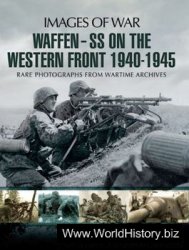 Author: Ian Baxter Waffen SS on the Western Front 1940-1945 (Images of War) Pen and Sword Military 2013 Format: EPUB Pages: 160 Size: 8 Mb This book in the popular Images of War series covers the deeds of the Waffen-SS on the Western Front during the Second World War. With extensive text and in-depth captions with many rare and unpublished photographs, it describes the fighting tactics, the uniforms, the battles and the different elements that went into making the Waffen-SS such an elite fighting unit. It traces how the Waffen-SS carefully built up their assault forces utilizing all available reserves and resources into a ruthlessly effective killing machine.
 
 The Battle for Moscow The Battle for Moscow 
 Author: Albert Seaton The Battle for Moscow Playboy Press 1980 Format: PDF Pages: 340 Language: English Size: 37.4 MB The course of human civilization has turned on the outcome of a select few climactic battles throughout history, but never more so than when Stalin's enigmatic Soviet Union desperately rallied its resources to stave off Hitler's armies in the Battle for Moscow. From the drama in the command posts to the plight of the infantry and armor in the mud and snow, Seaton illuminates the titanic struggle that was the pivotal battle of WWII.
 
 The German Army, 1933-1945 The German Army, 1933-1945 
 Author: Albert Seaton The German Army, 1933-1945 St. Martin's Press 1982 Format: PDF Pages: 340 Language: English Size: 63.7 MB This is the story of that German Army—its leaders, its fighting men, its weapons and tactics, its battles on the field and its internal power struggle, its outward strength and its inner weakness. It is a story that long has needed telling—and now it has been told by a master.
 
 Sherman Tank: Rare Photographs from Wartime Archives (Images of War) Sherman Tank: Rare Photographs from Wartime Archives (Images of War) 
 Sherman Tank: Rare Photographs from Wartime Archives Author: Gavin Birch Penn & Sword Books Images of War 2005 ISBN: 1844151875 Pages: 192 Language: English Format: EPUB Size: 12 MB A brilliant and prolific collection of rare photographs celebrating the war-winning qualities of arguably the most important tank of the Second World War. Many of the marvelous images have never been seen before but thanks to the author, who has special access to the IWM archive they are now available with full authoritative captions.
 
 Red-tail Angels: The Story of the Tuskegee Airmen of World War II Red-tail Angels: The Story of the Tuskegee Airmen of World War II 
 Author: Pat Mckissack Red-tail Angels: The Story of the Tuskegee Airmen of World War II Walker Publishing Company, Inc. 1995 Format: PDF Pages: 152 Language: English Size: 22.3 MB Established in 1941, the pilot-training program at Tuskegee, Ala., had been designed as an "experiment," without full military support to ensure its success and with many officers predicting utter failure. Despite segregated facilities at the base, hostile reactions from the locals and other demoralizing conditions, the aviators trained at Tuskegee went on to fly hundreds of missions over North Africa and Europe. They were known as Red Tails for the designs on their planes; they earned the nickname Red-Tail Angels with their reputation for staying with the bomber planes they escorted. The pilots of the 332nd division, the McKissacks point out, never lost a bomber-a record unmatched by any other group in the Army Air Force. As the McKissacks outline the history of the squadron, they also tell the larger story of racial tension and bigotry in the U.S. Numerous photos, from both military archives and individual fliers, depict the pilots and their deeds.
 
 Typhoon, the Other Enemy: The Third Fleet and the Pacific Storm of December 1944 Typhoon, the Other Enemy: The Third Fleet and the Pacific Storm of December 1944 
 Author: C. Raymond Calhoun Typhoon, the Other Enemy: The Third Fleet and the Pacific Storm of December 1944 Naval Institute Press 1981 Format: PDF Pages: 266 Language: English Size: 30.6 MB This is the story of the U.S. Third Fleet's battle with a devastating typhoon in the Philippine Sea on 18 December 1944. It is about men and ships under conditions of extreme adversity, and tells of their desperate, often heroic, sometimes tragic struggle to survive. The account describes the loss of seven hundred and ninety officers and men, three destroyers, and well over a hundred aircraft. It notes that two of the three ships lost were Farragut-class destroyers, long known to have low margins of stability. Included is an eyewitness account of the experience of the Dewey, a destroyer of the same class, which rolled to the limit of its capacity to recover—in the words of Hanson Baldwin, "perhaps the first vessel in the history of the sea to survive such a roll." 1 Some of these events raised questions about destroyer stability and the responsibility of the Bureau of Ships for destroyer design. This book addresses those questions.
 
 United States Army in WWII - Europe - The Ardennes Battle of the Bulge [Illustrated Edition] United States Army in WWII - Europe - The Ardennes Battle of the Bulge [Illustrated Edition] 
![United States Army in WWII - Europe - The Ardennes Battle of the Bulge [Illustrated Edition] United States Army in WWII - Europe - The Ardennes Battle of the Bulge [Illustrated Edition]](/uploads/posts/2015-05/1432563079_1428528748_0034497d_medium.jpeg) Author: Hugh M. Cole United States Army in WWII - Europe - The Ardennes Battle of the Bulge [Illustrated Edition] Pickle Partners Publishing ISBN: 0794837700 2013 Format: EPUB Size: 5,7 МБ Language: English Pages: 572 The Ardennes: Battle of the Bulge treats the German winter counteroffensive in Belgium and Luxembourg. The volume covers the operations of the U.S. First and Third Armies from the start on December 16, 1944, to January 3, 1945, when successful elimination of the 'bulge' was assured. The Ardennes focuses on the division as the chief tactical and administrative unit. However, in the early hours and first days the battle mandates that the story be told at platoon and company level with cross reference to battalions, regimental combat teams, and armored combat commands. Command and control exercised by the army corps generally appears in the allocation of reserves rather than in tactical direction of the battle. Higher command efforts come into the narrative in a few specific instances, such as the gross failure of Allied intelligence; the geographic division of command between Montgomery and Bradley; the decisions to hold the American linchpins on the Elsenborn ridge, St. Vith, and Bastogne, at the shoulders of the German salient; and the initial large-scale counterattack mounted by the Third Army. The history of German command and troop operations is told in considerable detail. At the close of World War II, German officers were brought together so as to re-create the commands and general staffs of the major units taking part in the Ardennes campaign. As a result of this exercise in collective memory of The Ardennes has an unmatched wealth of precise and parallel information on 'the other side of the hill'. Much attention is also given to the role played by the Allied air forces-particularly the tactical air commands-and to the effect of weather on air-ground cooperation and on German logistics.
 
 World War II Glider Assault Tactics World War II Glider Assault Tactics 
 Author: Gordon L. Rottman World War II Glider Assault Tactics Osprey Publishing Osprey Elite 200 ISBN: 1782007733 2014 Format: PDF (e-book) Pages: 66 Size: 3 Mb Language: English Military gliders came of age in World War II, when glider assault infantry were the forerunners of today’s helicopter-delivered airmobile troops. From the light pre-war sports and training machines, several nations developed troop-carrying gliders capable of getting a whole squad or more of infantry, with heavy weapons, onto the ground quickly, with the equipment that paratroopers simply could not carry. They made up at least one-third of the strength of US, British, and German airborne divisions in major battles, and they also carried out several daring coup de main raids and spearhead operations.
 
 Hitler's Undercover War: The Nazi Espionage Invasion of the U.S.A. Hitler's Undercover War: The Nazi Espionage Invasion of the U.S.A. 
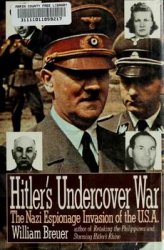 Author: William B. Breuer Hitler's Undercover War: The Nazi Espionage Invasion of the U.S.A. St. Martin's Press 1989 Format: PDF Pages: 408 Language: English Size: 57.5 MB Soon after Hitler came to power in 1933, his secret service chief, Wilhelm Canaris, launched a large number of undercover agents across the Atlantic. As the author points out, the U.S. in the 1930s was a spy's paradise, a booming industrial giant with hardly any security safeguards in place. Breuer ( Retaking the Philippines ) traces the most effective Nazi agents and the FBI's slow awakening to their threat. The reader is plunged into a world of microdots, invisible ink, incendiary pencils, coded signals to offshore U-boats, bull-necked Nazi supporters, curvaceous blondes, sinister figures with hatbrims pulled low over their eyes, and agents who sing like canaries after they're nabbed. The dreaded nemesis of all these bad guys (and gals), FBI director J. Edgar Hoover, is described as an iron-jawed super-sleuth. Written in an appropriate dated style, this well-researched account of Nazi agents' penetration of military installations, defense plants and high-level government agencies in Washington, and the FBI's delivery of what Breuer calls the knockout blow, is great fun.
 
 Black Thursday [Illustrated Edition] Black Thursday [Illustrated Edition] 
![Black Thursday [Illustrated Edition] Black Thursday [Illustrated Edition]](/uploads/posts/2015-05/1432470149_1431513568_003514b1_medium.jpeg) Author: Martin Caidin Black Thursday [Illustrated Edition] Pickle Partners Publishing ISBN: 0553135821 2014 Format: EPUB Size: 3,4 МБ Language: English Pages: 304 Includes 15 photographs, 23 drawings and 2 maps The battle fought on Black Thursday stands high in the history of American fighting men. It will be long remembered, like the immortal struggles of Gettysburg, St. Mihiel and the Argonne, of Midway and the Bulge and Pork Chop Hill. Tens of thousands of our airmen fought in desperate battles in the sky during World War II. From China to the Aleutians, from Australia through the Philippines and across the Southwest Pacific, through the Central Pacific, in Africa and the Mediterranean, and across the length and breadth of Europe, American fliers engaged in combat with the Germans, the Japanese, the Italians. In all these battles one stands out among all the others for unprecedented fury, for losses suffered, for courage. This was the battle on Black Thursday, Mission 115 of the VIII Bomber Command from bases in England to the savagely defended German city of Schweinfurt. It was a battle in which we suffered unprecedented losses, and a battle that we cannot in honesty remember as having produced the results we had hoped for, or that hurt the enemy’s war effort as much as we had believed. Yet it is an aerial struggle remembered with great pride, for it demanded the utmost in courage, in skill, in carrying on the fight in the face of bloody slaughter. All these things, and more, make up the story of Black Thursday, of this book.
 
 The Admirals: Nimitz, Halsey, Leahy, and King--The Five-Star Admirals Who Won the War at Sea The Admirals: Nimitz, Halsey, Leahy, and King--The Five-Star Admirals Who Won the War at Sea 
 Author: Walter R. Borneman The Admirals: Nimitz, Halsey, Leahy, and King--The Five-Star Admirals Who Won the War at Sea LB & Co 2012 ISBN: 0316097845 Format: EPUB Size: 5,5 МБ Language: English Pages: 576 How history's only five-star admirals triumphed in World War II and made the United States the world's dominant sea power. Only four men in American history have been promoted to the five-star rank of Admiral of the Fleet: William Leahy, Ernest King, Chester Nimitz, and William Halsey. These four men were the best and the brightest the navy produced, and together they led the U.S. navy to victory in World War II, establishing the United States as the world's greatest fleet.
 
 Britain Alone June 1940 to December 1941 Britain Alone June 1940 to December 1941 
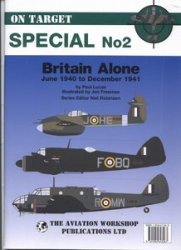 Author: Paul Lucas Britain Alone June 1940 to December 1941 (On Target Special No2) Aviation Workshop 2003 ISBN: 190464306X Format: PDF Size: 25,7 МБ Language: English Pages: 72 Between the fall of France in June 1940 and Hitler's invasion of the Soviet Union in June 1941, the British Isles stood completely alone without a major European ally in the struggle against Nazi Germany. Even when the Soviet Union was brought in to the war in far off eastern Europe, it was by no means certain that an alliance between Britain and the Soviet Union would last for more that a few months before the Soviets would be overrun and defeated, such was the initial success of 'Operation Barbarossa'. It was only with the entry of the United States in to World War Two, following the Japanese attack on Pearl Harbor in December 1941, that the ultimate path to victory over Nazi Germany became clearer. The eighteen months between June 1940 and December 1941 saw many anomalies and significant changes to the camouflage and markings of British military aircraft which were operating in many different parts of the world and makes for a fascinating period to study. To record every facet of these camouflage and markings during this time however would be a task which would require a book many times the size of this volume. Instead, this On Target Special seek to examine some of the lesser known and more unusual aspects of British camouflage and markings practices through a series of essays chronologically grouped around the period, in three specific Theatres of Operations, namely the Air Defence of the United Kingdom, the Battle of the Atlantic and the war in the Mediterranean and Middle East.
 
 British Tanks: The Second World War British Tanks: The Second World War 
 Author: Pat Ware British Tanks: The Second World War Pen and Sword Images of War 2012 Format: EPUB Pages: 128 Size: 66 Mb Language: English Perhaps the British did not produce the most successful tanks of the Second World War, but they certainly designed an extraordinary range of light, medium and heavy tanks along with many that were adapted for special purposes. This fascinating variety of military machinery is recorded in Pat Ware's photographic history. Using a selection of wartime photographs - supported by some modern photographs of preserved vehicles - the book describes the origins of the tank in Britain during the First World War, looks at British tank development during the inter-war period and contrasts this with advances made elsewhere - in Germany, France, the USA and the Soviet Union.
 
 Seizing the Enigma: The Race to Break the German U-boat Codes, 1939-1943 Seizing the Enigma: The Race to Break the German U-boat Codes, 1939-1943 
 Author: David Kahn Seizing the Enigma: The Race to Break the German U-boat Codes, 1939-1943 Arrow Books 1996 Format: PDF Pages: 372 Language: English Size: 43 MB An account of one of the key campaigns of World War II, the Battle of the Atlantic. While the Royal Navy and RAF protected Allied shipping and captured secret documents and cipher machines, the Intelligence group at Bletchley Park fought the backroom war to unravel the German code, Enigma.
 
 Operation Barbarossa: Strategy and Tactics on the Eastern Front, 1941 Operation Barbarossa: Strategy and Tactics on the Eastern Front, 1941 
 Author: Bryan I. Fugate Operation Barbarossa: Strategy and Tactics on the Eastern Front, 1941 Presidio Press 1984 Format: PDF Pages: 464 Language: English Size: 69 MB This insightful book covered the initial year of the German invasion of Soviet Russia. The book is well written and the author was able to go beyond the basic assessment as he tries with certain success, what went wrong and what went right during the initial seven months of this campaign. The author made it clear that it took a lot more then bad weather, Hitler's interferences and over extension of German forces to cost Germany any chance for victory during this period. He seem to be in the mind that German overall military leadership remains badly divided and also gives credits to the Russian willingness to trade space for time as they took the initial devastating losses and converted that time into a defensive position where they could launch a set of massive counter offensives. It seem that Germans were fixated into short term goals and objectives while the Russians were gearing for the long haul The author gives a fair and pretty perceptive views of the strategic and tactical situation during this initial seven month period of the Operation Barbarossa.
 
 Waffen-SS: La Guardia Negra de Hitler en la Guerra Waffen-SS: La Guardia Negra de Hitler en la Guerra 
 Author: Christopher Ailsby La Guerra Civil Espanola: dia a dia 1936-1939 Libsa 2000 Format: PDF Pages: 176 Size: 28 Mb Language: Spanish Waffen SS: Hitler's Black Guard at War
 
 Panzer III vs Somua S 35: Belgium 1940 Panzer III vs Somua S 35: Belgium 1940 
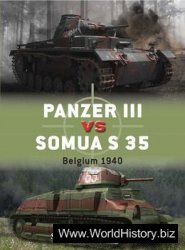 Author: Steven J. Zaloga Panzer III vs Somua S 35: Belgium 1940 Osprey Publishing Osprey Duel 63 ISBN: 1782002871 2014 Format: PDF (e-book) Pages: 83 Size: 5 Mb Language: English The armour clashes in May 1940 were the biggest the world had yet seen, as the sweeping German advances of that period came to epitomize Blitzkrieg. The Wehrmacht's Panzer III was well matched by the French Somua S35 tanks, the two representing very different design philosophies and yet both ranking among the best in the world at the time. Fully illustrated with specially commissioned colour artwork, this work draws upon the latest research to provide a definitive analysis of the clash between these two high-quality, cutting-edge tank designs. It describes one of the key duels at the heart of a new type of warfare, in the epic battles at the outset of Hitler's conquest of France and the Low Countries.
 
 Herald of Victory - Battlefield Air Attack in the Second World War Herald of Victory - Battlefield Air Attack in the Second World War 
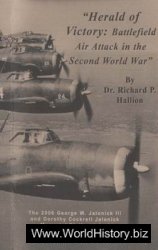 Author: George W Jalonick, Dorothy Cockrell Jalonick Herald of Victory - Battlefield Air Attack in the Second World War The University of Texas in Dallas 2006 Format: PDF Pages: 24 Language: English Size: 23.3 MB Air warfare was a major component of World War II in all theatres and, together with anti-air attack, consumed a large fraction of the industrial output of the major powers. Germany and Japan depended on air forces that were closely integrated with land and naval forces; they downplayed the advantage of fleets of strategic bombers, and were late in appreciating the need to defend against Allied strategic bombing. By contrast, Britain and the United States took an approach that greatly emphasised strategic bombing, and to a lesser degree, tactical control of the battlefield by air, and adequate air defences. They both built a strategic force of large, long-range bombers that could carry the air war to the enemy's homeland. Simultaneously, they built tactical air forces that could win air superiority over the battlefields, thereby giving vital assistance to ground troops. They both built a powerful naval-air component based on aircraft carriers, as did Japan; these played the central role in the war at sea.
|
|













![United States Army in WWII - Europe - The Ardennes Battle of the Bulge [Illustrated Edition] United States Army in WWII - Europe - The Ardennes Battle of the Bulge [Illustrated Edition]](/uploads/posts/2015-05/1432563079_1428528748_0034497d_medium.jpeg)


![Black Thursday [Illustrated Edition] Black Thursday [Illustrated Edition]](/uploads/posts/2015-05/1432470149_1431513568_003514b1_medium.jpeg)








 World History
World History
